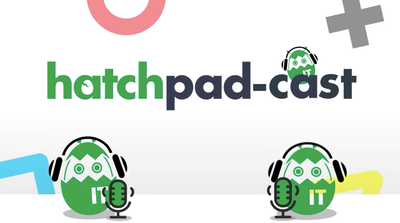
Security News
TypeScript is Porting Its Compiler to Go for 10x Faster Builds
TypeScript is porting its compiler to Go, delivering 10x faster builds, lower memory usage, and improved editor performance for a smoother developer experience.
github.com/rorycl/rm2pdf
version 0.1.6 : 22 February 2023
Convert reMarkable tablet file 'bundles' to layered PDFs, with optional per-layer colours for selected pens.
rm2pdf does not support the new reMarkable v3 software format files,
which produces .rm version 6 files.
This version 0.1.6 should detect the attempted processing of the new format files.
Support for the the new content metadata file format for reMarkable
tablets using version 3 software is included for issue
11, however the underlying
issue is the new version 6 rm files.
The status of the community work on version 6 files is set out here.
Recent releases:
config_example.yaml.content)./rm2pdf -h
Usage:
rm2pdf InputPath OutputFile
rm2pdf version 0.1.6
...
rm2pdf [-v] [-c red] [-c green] [-c ...] InputPath OutputFile
Application Options:
-v, --verbose show verbose output
this presently does not do much
-s, --settings= path to customised pen settings file
-t, --template= path to a single page A4 template to use when no UUID.pdf exists
useful for processing sketches without a backing PDF
-c, --colours= colour by layer
use several -c flags in series to select different colours
e.g. -c red -c blue -c green for layers 1, 2 and 3.
See golang.org/x/image/colornames for the colours that can be used
Help Options:
-h, --help Show this help message
Arguments:
InputPath: input path and uuid, optionally ending in '.pdf'
OutputFile: output pdf file to write to
Invocation examples for annotated PDFs using the test files in testfiles:
rm2pdf testfiles/cc8313bb-5fab-4ab5-af39-46e6d4160df3.pdf output.pdf
rm2pdf -c orange -c olivegreen \
testfiles/cc8313bb-5fab-4ab5-af39-46e6d4160df3.pdf output2.pdf
Invocation examples for reMarkable notebooks using the test files in testfiles
and the A4 template in templates.
rm2pdf -c blue -c red -t templates/A4.pdf \
testfiles/d34df12d-e72b-4939-a791-5b34b3a810e7 output4.pdf
The embedded template is used where one is not provided, so the above command is the same as
rm2pdf -c blue -c red \
testfiles/d34df12d-e72b-4939-a791-5b34b3a810e7 output4.pdf
rm2pdf requires "bundles" of files created on the reMarkable tablet, including
the associated .metadata and .content files, together with the .rm binary
and -metadata.json files associated with each page of reMarkable marks.
rm2pdf aims to create PDFs from both PDFs that are annotated on the reMarkable and reMarkable notebooks using these files. The latter uses an empty template PDF as the background. PDF templates can be made from the reMarkable png templates (in /usr/share/remarkable/templates) but should fit the standard 222.6264mm x 297.0000mm reMarkable output PDF size, or be A4.
Output PDFs are layered with the background PDF forming a "Background" layer and subsequent layers using the layer names created on the tablet. The layers can be turned on and off using tools provided by PDF readers such as Evince.
The pen widths and opacities provided by default are estimates. Colours, base width and opacity are set for each pen are set in rmpdf/stroke.go. Those pens with ColourOverride true will have their colour overridden by the command-line options or pen configuration yaml file. Note that at present the .rm file pressure and tilt information are not presently used.
Some PDF files, notably those created by Microsoft Word, cannot be imported
reliably, causing the programme to panic. Reprocessing problem PDFs with the
pdftk tool seems to fix the problem.
Note that rm2pdf has only been tested on a reMarkable v1 tablet.
The project includes rmparse/rmparse.go, a remarkable tablet Go port of reMarkable tablet "lines" or ".rm" file parser, with binary decoding hints drawn from rm2svg https://github.com/reHackable/maxio/blob/master/tools/rM2svg which in turn refers to https://github.com/lschwetlick/maxio/tree/master/tools.
The project makes extensive use of the go PDF fpdf library and the contrib
module gofpdi. The latter is used for including pages from existing PDF
documents.
If your pdf causes fpdf to fail, resave the pdf using the pdftk
programme.
Developed with go 1.18 on 64bit Linux.
Test: go test -v ./...
Build : go build; this should produce an executable called rm2pdf.
This project is licensed under the MIT Licence.
FAQs
Unknown package
Did you know?

Socket for GitHub automatically highlights issues in each pull request and monitors the health of all your open source dependencies. Discover the contents of your packages and block harmful activity before you install or update your dependencies.

Security News
TypeScript is porting its compiler to Go, delivering 10x faster builds, lower memory usage, and improved editor performance for a smoother developer experience.

Research
Security News
The Socket Research Team has discovered six new malicious npm packages linked to North Korea’s Lazarus Group, designed to steal credentials and deploy backdoors.

Security News
Socket CEO Feross Aboukhadijeh discusses the open web, open source security, and how Socket tackles software supply chain attacks on The Pair Program podcast.